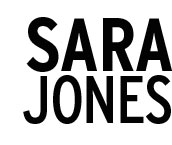TRANSMITTER PRESENTS: 6 x 6
JEFF FELD, ERIK SHANE SWANSON, LYNN SULLIVAN, JOHN BOHL, SKYE GILKERSON, SANDRA ONO
FEBRUARY 20 – MARCH 28, 2015
OPENING RECEPTION FRIDAY, FEBRUARY 20, 6 – 9 PM
Transmitter is delighted to announce 6 x 6, with works by Jeff Feld, Erik Shane Swanson, Lynn Sullivan, John Bohl, Skye Gilkerson and Sandra Ono. The opening will take place Friday, February 20, 2015 from 6 – 9 pm and the works will be on view through March 28, 2015. 6 x 6 is a show created through a process of “curatorial telephone.” Each Transmitter partner chose an artist in the order in which the partner joined the gallery. Additionally, each partner chose an artist for 6 x 6 based on perceived harmonizing themes of the works that preceded their choice. With this eccentric curatorial process Transmitter created a potential for multilayered interpretations of visual connections.
Rob de Oude, initiator and originator of Transmitter, chose Jeff Feld. Rob says “I met Jeff a few years back during openings at one of the many galleries in Bushwick and as it turns out we have a lot of mutual friends. He had kept the door to his new studio and home shut for a long time because of renovations, but then during open studios a year and a half ago, I had the opportunity to see his work and was immediately attracted to these sculptures for their humorous and lightweight (literally) take on formalism and modernism. The pieces are very well made and I did not recognize the material right away; they appear to be wood, metal or stone rather than cardboard.”
Carl Gunhouse next selected Erik Shane Swanson, whose interest in vernacular objects and design has led to a practice that elevates and redeems the everyday. Swanson’s most recent work embeds commercial iconography from ice packs and saltshakers into faux-marble, using an ancient Roman practice called scagliola. This creates a sleight of hand within a sleight of hand, revealing overlooked everyday objects by embedding them in marble patterns, while hiding the materiality of the work in plain sight.
Tom Marquet chose Lynn Sullivan. In her work, plaster forms appear to have been fixed midway through processes of division and duplication. Initially bone or fossil-like in appearance, these forms are built by layering plaster and paper pulp on models of sailing ships, one form of sculpture growing on top of another. This process of division and accumulation is hinted at and echoed in the structure of the works' pedestals. Through this process, Sullivan recodes the nostalgic metaphors of travel inherent in the model sailing ship into an uncanny echo of the artifacts of pre-historic, pre-human time.
Rod Malin selected John Bohl’s work for its referential language that activates a dialogue within the group exhibition. Bohl creates a symposium of visible language expressed fluidly across several major bodies of works. Bohl’s keen sense of collaboration has given his practice a foundation of social and aesthetic value. His ability to navigate painting in a playful, yet thoughtfully determined manner, is untarnished by the challenges of the craft. Bohl’s abstractions could be classified as Visceral-Pop; they are suggestive and unique while being culturally familiar.
Sara Jones chose Skye Gilkerson, who uses subtle interventions, constructed from ordinary, often ubiquitous materials, to unfold our awareness of our surroundings and destabilize familiar structures. Space, time, light, and language, as well as architecture, landscape, and changes in the weather; all become the materials for this exploration. She says, “From the vacant building next to my studio, to the distance between mountain ranges, to the spaces that separate words on a page, my work begins with openings and gaps.” In this exhibition, Skye will be showing works on paper from the series “Wounded in West Texas.”
Finally, Mel Prest invited Sandra Ono to complete the exhibition. Ono’s work is precise, but not tight, and is filled with dark humor and beauty. Inspired by biology and physiology, she uses synthetic, utilitarian products, such as fake fingernails, plastic bags and rubber bands, transformed into larger shapes. With repetitive gestures, she constructs organic forms that appear to build up and break down at the same moment to serve as proxies for different internal states. Her objects and installations experiment with formal elements and the way they shape our cognitive and visceral experiences.
John Bohl
